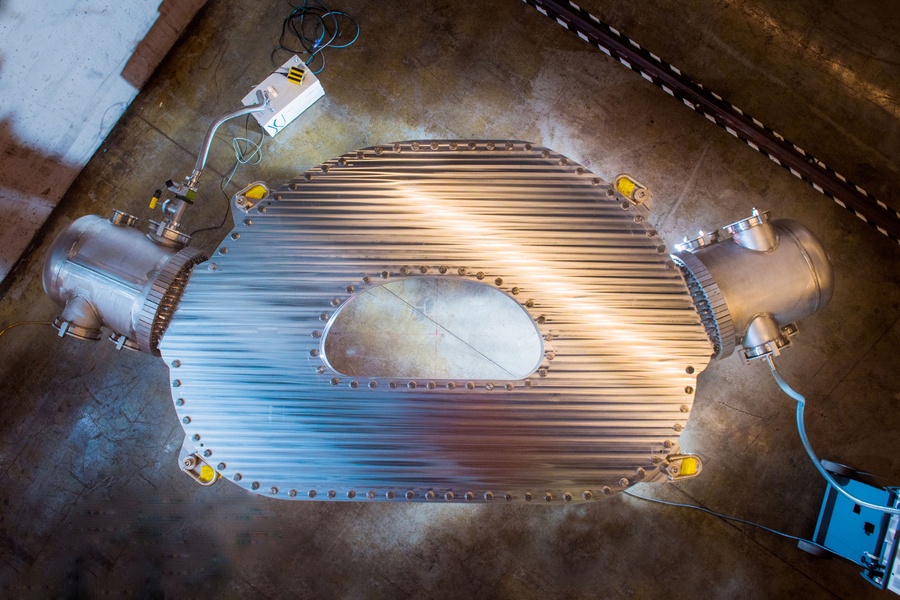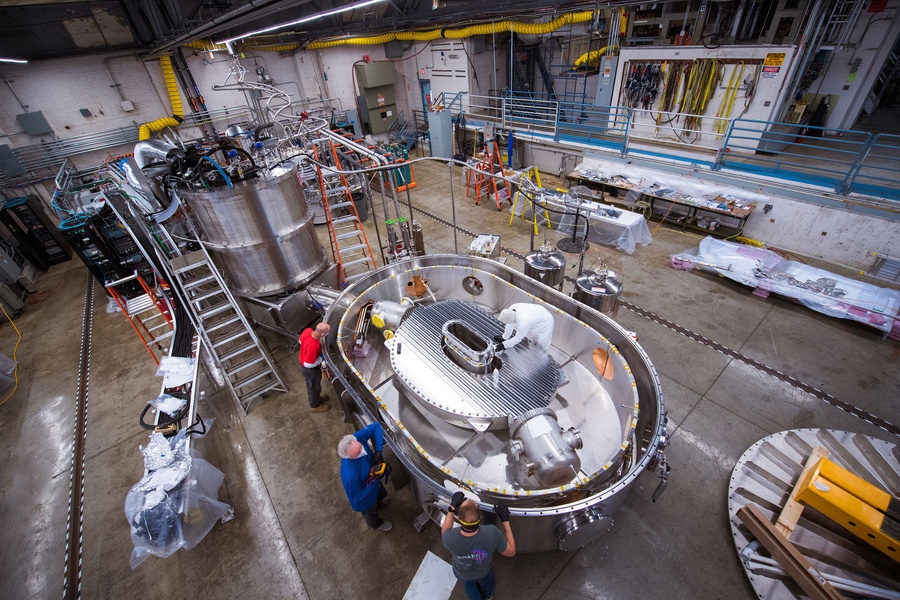On September 5, 2021, a team of MIT researchers successfully tested a high-temperature superconducting magnet, breaking the world record for the most powerful magnetic field strength ever produced. Reaching 20 Teslas (a measure of field intensity), this magnet could prove to be the key to unlocking nuclear fusion, and providing clean, carbon-free energy to the world.
Nuclear fusion has been the holy grail of clean energy for decades now, but it’s a difficult nut to crack. Current nuclear power plants use fission – the splitting of atoms – to produce electricity. It’s effective, but can be dangerous, and leaves behind long-lasting nuclear waste which is difficult and expensive to store safely. Nuclear fusion, on the other hand, relies on combining two atoms together to make a larger one. This is the kind of reaction that occurs in the Sun and stars. When artificially reproduced on Earth, it is far less prone to catastrophic explosions than fission is, and it produces far less radioactive waste. If a commercially viable fusion reactor could be made a reality, it could quickly become the energy source of the future.

This is where MIT’s powerful new magnet comes in. Nuclear fusion only occurs at immensely high temperatures – the plasma must reach temperatures that would melt or destroy any material that humans could think to build a reactor out of. The solution, proposed as early as the 1950s, is to contain the plasma without letting it touch anything. A strong magnetic field can do just that, creating an artificial ‘bottle’ in which nuclear fusion can occur.
The most common shape for one of these magnetic bottles is a donut-like object known as a tokamak. MIT scientists hope to arrange their powerful new magnets into a tokamak reactor, and in doing so produce net-positive nuclear fusion (fusion that produces more energy than it uses) by 2025.
The real ground-breaking work here isn’t the fusion itself. Artificial fusion reactions have been produced before. The problem is that, so far, they always take more energy to run than they produce (keeping those magnetic fields up to contain the plasma uses a lot of energy). By working to improve the magnets, the MIT team hopes to be the first to finally produce a reactor that makes more energy than it uses.
Previous attempts at a net-positive reactor have used conventional copper electromagnets, and more recently, low-temperature superconductors, to contains the fusion reaction. The MIT team, and their commercial partner, a startup named Commonwealth Fusion Systems (CFS), surpassed their competitors by applying a new superconducting material to the magnets: a high-temperature superconductor. This material is applied as a ribbon-like tape, and it allows them to create a much stronger magnetic field in a much smaller space. A low-temperature superconductor would need a volume 40 times bigger to achieve the same field strength.

Martin Greenwald, deputy director and senior research scientist at MIT’s Plasma Science and Fusion Center, explained “the niche that we were filling was to use conventional plasma physics, and conventional tokamak designs and engineering, but bring to it this new magnet technology. So, we weren’t requiring innovation in a half-dozen different areas. We would just innovate on the magnet, and then apply the knowledge base of what’s been learned over the last decades.”
With the magnet’s successful test last week, that strategy seems to be paying off. Last year, a series of scientific papers used simulations to predict that if the magnet worked correctly, then the fusion reactor should indeed be able to produce net-positive fusion power. With the successful magnet test now out of the way, all that’s left is to manufacture the entire system, (known as SPARC) which should take about three years.
If they are successful, it could change the world. As Maria Zuber, MIT’s Vice President for Research explains, “Fusion in a lot of ways is the ultimate clean energy source…The amount of power that is available is really game-changing.” Their ultimate goal is to decarbonize the power grid, slowing down climate change and reducing the output of greenhouse gases. If they succeed at that, it will have been worth it. “None of us are trying to win trophies at this point.” Zuber said, “We’re trying to keep the planet livable.” Their record-breaking 20 Tesla magnetic field may just be the key to unlocking nuclear fusion, and turning the tide in the fight against climate change.
Learn More: David Chandler “MIT-designed project achieves major advance toward fusion energy.” MIT News.
Featured Image: Rendering of SPARC, a compact, high-field, tokamak, currently under design by a team from the Massachusetts Institute of Technology and Commonwealth Fusion Systems. Its mission is to create and confine a plasma that produces net fusion energy. Credit: T. Henderson, CFS/MIT-PSFC, 2020

